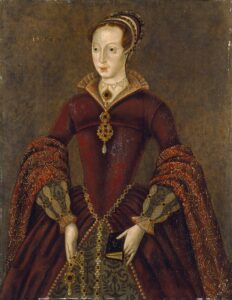
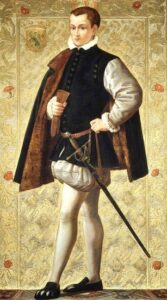 Lady Jane Grey was the great-granddaughter of King Henry VII and the cousin of King Edward VI. Lady Jane and Edward, who were the same age, and they were almost married in 1549. Nevertheless, in May of 1553, Lady Jane Grey was married to Lord Guildford Dudley, the son of John Dudley, the duke of Northumberland. Soon after her marriage, King Edward fell ill with tuberculosis, which would take his life in the end. This would set off a cacophony of arguments that would not end well.
Lady Jane Grey was the great-granddaughter of King Henry VII and the cousin of King Edward VI. Lady Jane and Edward, who were the same age, and they were almost married in 1549. Nevertheless, in May of 1553, Lady Jane Grey was married to Lord Guildford Dudley, the son of John Dudley, the duke of Northumberland. Soon after her marriage, King Edward fell ill with tuberculosis, which would take his life in the end. This would set off a cacophony of arguments that would not end well.
Even in those days, discord over religion brought fights, even to the point of violence. The Catholics and Protestant religions were at war. Mostly it wasn’t a physical war, but certainly sometimes it was an all-out war. Lady Jane as it turned out, was a Protestant, while King Edward VI’s half-sister, Mary was a Catholic. King Edward VI did not want to hand over his throne to Mary. Lady Jane’s father-in-law, John Dudley agreed, and so persuaded the dying king that Lady Jane, a Protestant, should be chosen the royal successor over Edward’s half-sister Mary, a Catholic. So, in June 1553, the dying Edward VI wrote his will, in which he nominated Jane and her male heirs as successors to the Crown. King Edward VI agreed that Mary should not succeed him because she was Catholic would not support the reformed Church of England, whose foundation Edward laid. The will removed his half-sisters, Mary and Elizabeth, from the line of succession on account of their illegitimacy, subverting their lawful claims under the Third Succession Act. Through Northumberland, Edward’s letters patent in favor of Lady Jane was signed by the entire privy council, bishops, and other notables.
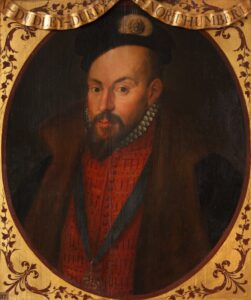

On July 6, 1553, Edward died, and four days later Lady Jane Grey was proclaimed queen of England. The 15-year-old Lady Jane, beautiful and intelligent, had only reluctantly agreed to be put on the throne, and it would be the worst decision of her life. While Lady Jane’s ascendance was supported by the Royal Council, the populace supported Mary, as the rightful heir. Two days into Queen Jane’s reign, Dudley departed London with an army in an effort to suppress Mary’s forces. I don’t know if that was a good idea, or not…likely not, because in his absence the Council declared him a traitor and Mary the queen. Queen Jane’s reign was just nine days.
The next day, July 20th, most of Dudley’s army deserted him, and he was immediately arrested. The same day, now Lady Jane was imprisoned in the Tower of London. Her father-in-law was condemned for high treason, and on August 23rd he was executed. On November 13th, Lady Jane and her husband, Guildford Dudley, were also found guilty of treason. They were both sentenced to death, but because of their youth and relative innocence Queen Mary had chosen not to carry out the death sentences.
Lady Jane’s father, Henry Grey grew furious in early 1554, and joined Sir Thomas Wyatt in an insurrection against Queen Mary, because she had announced her intention to marry Philip II of Spain. While suppressing 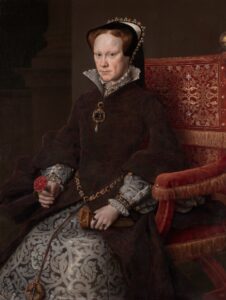
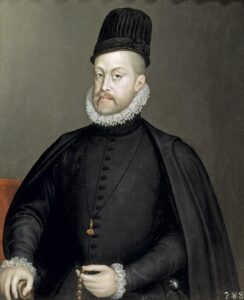 the revolt, Queen Mary decided it was going to be necessary to eliminate all her political opponents, whether she wanted to or not, and on February 7th she signed the death warrants of Lady Jane and her husband. On the morning of February 12th, Lady Jane watched her husband being carried away to execution from the window of her cell in the Tower of London. That must have been horrible in so many ways. This was her husband being led to his death, but she also knew that she was next. Then, just two hours later she was also executed. “As British tradition tells the story, after the 16-year-old girl was beheaded, her executioner held Lady Jane’s head aloft and recited the words: ‘So perish all the queen’s enemies! Behold, the head of a traitor!'”
the revolt, Queen Mary decided it was going to be necessary to eliminate all her political opponents, whether she wanted to or not, and on February 7th she signed the death warrants of Lady Jane and her husband. On the morning of February 12th, Lady Jane watched her husband being carried away to execution from the window of her cell in the Tower of London. That must have been horrible in so many ways. This was her husband being led to his death, but she also knew that she was next. Then, just two hours later she was also executed. “As British tradition tells the story, after the 16-year-old girl was beheaded, her executioner held Lady Jane’s head aloft and recited the words: ‘So perish all the queen’s enemies! Behold, the head of a traitor!'”


Leave a Reply